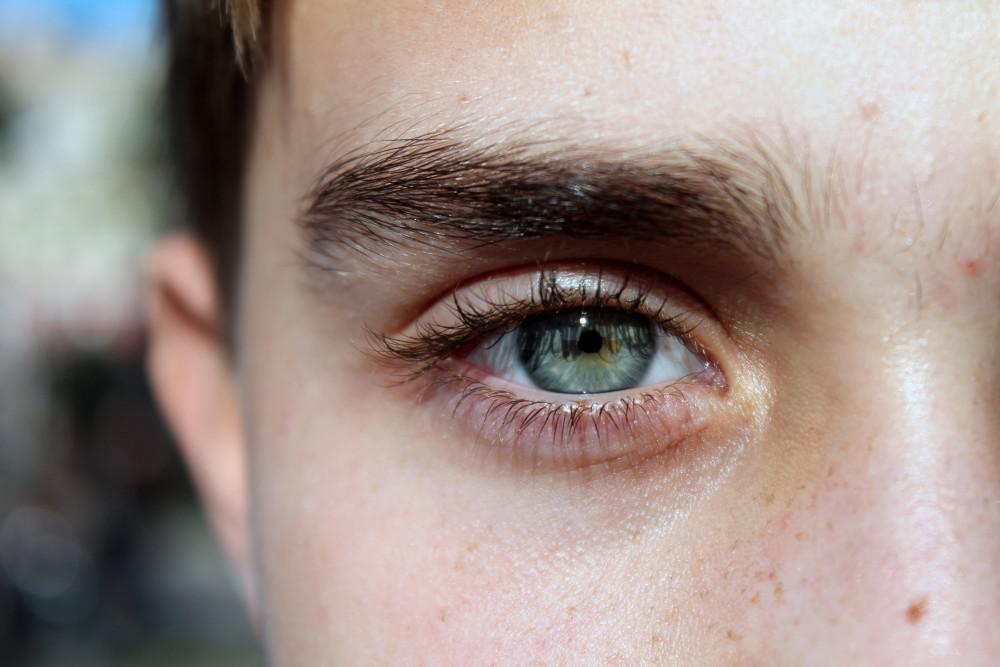Cataract
Cataracts occur when the lens in your eye becomes cloudy from natural proteins that build up over time. Most cataracts develop slowly over time, causing symptoms such as blurry vision. The good news is that Cataract can be easily removed by surgery which is a very safe surgical procedure. Consult with a doctor to know more.
What is Cataract?
The word cataract is used to describe a natural lens that has formed cloudy. Cataract is not a disease, but rather a condition affecting the eye. As the natural lens of the eye becomes cloudy, it does not allow light to pass through it as well as it did when it was transparent. Cataract usually starts as a slight cloudiness that progressively grows more opaque. It is usually white, but may take on color such as yellow or brown. As the cataract becomes more mature (increasingly opaque and dense), the retina receives less and less light. The light that does reach the retina becomes increasingly blurred and distorted. This causes gradual impairment of vision. If left untreated, cataracts can cause needless blindness. A cataract can only be removed by surgery.

Symptoms Of Cataract
If you have Cataract, you may observe these symptoms

Blurred Or Clouded Vision

Seeing 'Halos' Around Lights

Problem With Night Vision

Problem With Glare Of Light

Fading Or Yellowing Of Colors

Double Vision

Blurred Or Clouded Vision

Seeing 'Halos' Around Lights

Problem With Night Vision

Problem With Glare Of Light

Fading Or Yellowing Of Colors

Double Vision
Cause Of Cataract
Subheading is Pending

Aging
It is the most common cause (just like graying of hair or wrinkling of skin).

Severe eye injury
Either mechanical, thermal, chemical, electrical or by radiation or by radiation.

Congenital
May be inherited or may be present at birth, due to infections, like German measles, in the mother during pregnancy.

Other systemic diseases
Like eye inflammation, tumors or general body disorders like diabetes.

Excessive or indiscriminate
Use of certain drugs like corticosteroids.

Aging
It is the most common cause (just like graying of hair or wrinkling of skin).

Severe eye injury
Either mechanical, thermal, chemical, electrical or by radiation or by radiation.

Congenital
May be inherited or may be present at birth, due to infections, like German measles, in the mother during pregnancy.

Other systemic diseases
Like eye inflammation, tumors or general body disorders like diabetes.

Excessive or indiscriminate
Use of certain drugs like corticosteroids.
Treatment Of Cataract
Subheading is Pending
- Cataract can not be treated by the use of medications. But, the only solution is surgery.
- There are no medications, eye drops, exercises, or glasses that will cause cataracts to disappear or prevent them from forming.
- There are no medications, eye drops, exercises, or glasses that will cause cataracts to disappear or prevent them from forming.
- The treatment of cataract is essentially surgical where the cataractous lens is removed and replaced by an Intra Ocular Lens.
- The timing is decided by the patient’s visual needs. A cataract needs to be removed only if it affects one’s vision so much that it interferes with one’s daily activities. Patient makes that decision himself.
- If you have cataracts in both eyes, the operation on the two eyes is performed preferably in an interval of one week.
- One and a half million people have cataracts removed every year and 95% have a successful result.
Cataract Surgery With
Highly Advanced PHACO Machine
The State-Of-The-Art PHACO Machine Is A Safer And Better Option For Cataract Surgery
The present options in phaco surgeries are:
- Standard Phaco
First Generation Phaco surgery done using simpler machines, the incision size is 3.2 mm. This type of surgery was first conducted in late 70’s. The surgery was done using injection to give local anesthesia.
- Cold Phoco
The second generation phaco surgery, the normal incision size is 2.8mm but it is much safer since the amount of heat being delivered to the eye gets reduced significantly thus reducing the trauma. The walk-in, walk-out surgery thus resulted without using injection and patch.
- Microincisional (Keyhole to Pinhole) Cataract Surgery
The MICS platform enables surgeon to do a microincision (1.4 – 1.8mm) cataract surgery that is not possible with any other system.

Are You Prone To Vision Loss
Due To Cataract?
Complete Cataract Treatment With State-Of-The-Art Technology
-
PHACO Machine
-
Keratometer
-
Slit Lamp
-
NC Tonometer
-
Applanation Tonometer
-
IOL Master
-
Optical Biometer
-
Microscope
-
IOL
PHACO Machine
The PHACO machine is an ultra-modern technology equipment used by doctors to replace the cataract affected lens in your eye and implant an artificial lens during the cataract surgery procedure. It is one of the best technologies available presently to do cataract surgery, used by doctors across the globe.

Keratometer
A Keratometer, also known as an ophthalmometer, is a diagnostic instrument for measuring the curvature of the anterior surface of the cornea, which is used to assess the amount and axis of astigmatism. Keratometry is the measurement of the corneal curvature determining the power of the cornea.

Slit Lamp
The binocular slit-lamp examination provides a stereoscopic magnified view of the eye structures in detail, enabling anatomical diagnoses to be made for a variety of eye conditions. A second, hand-held lens is used to examine the retina. A slit-lamp exam is usually done during a regular checkup with your eye doctor before the cataract surgery procedure.

NC Tonometer
NC Tonometer is used to perform Tonometry. Tonometry is a quick and simple test that checks the pressure inside your eyes. The results can help your doctor see if you're at risk for glaucoma. The pressure inside your eye is called intraocular pressure (IOP).

Radio Frequency Cautery Machine
Radio Frequency Cautery is a medical device that uses radiofrequency energy to heat and destroy tissue. Radio Frequency Cautery is used to remove warts, skin tags, keloids, and moles.

Hertel Exophthalmometer
The Hertel Exophthalmometer is used to measure the distance between the lateral orbital rim and the most anterior position of the cornea so to determine the axial position of the eyes.

Optical Biometer
Optical biometry is a highly accurate non-invasive automated method for measuring the anatomical characteristics of the eye. Accurate measurements are critical for determining the correct power of an IOL before it is implanted during cataract surgery. Before implantation the correct lens power needs to be determined.

Microscope
An operating surgical microscope is the most important optical instrument in the modern era of ophthalmic surgeries. It provides the surgeon with a magnified and illuminated high-quality image of the small ophthalmic structures. Being binocular the surgical microscopes gives the additional benefit of high-quality stereoscopy. Our microscopes are high-end with video recording facilities.

IOL
To take the place of the clouded human lens, a precisely engineered artificial lens called the intraocular lens, or “IOL”, is implanted into the eye at the time of cataract surgery. Unlike a contact lens, it is permanently fixated inside the eye.

FAQ
Frequently asked questions
When we are young, the natural lens inside our eyes is clear. Light passes through the clear lens and is focused onto the retina at the back of the eye which sends signals to the brain via the optic nerve. With age, the proteins in the eye form clumps, and the lens gradually becomes more and more opaque. This obstructs the passage of light and interferes with vision. A cataract in the eye makes things look blurry, hazy, or less colorful.
Cataract symptoms include cloudy or blurred vision, distorted or double vision, sensitivity to light and glare, difficulty seeing in poor lighting conditions, difficulty in distinguishing changes in contrast, and fading of colors. Cataract in eye causes people to feel as if they are living in a perpetual fog or looking through dirty eyeglasses. Everyday tasks such as driving, reading, and recognizing faces is affected. If allowed to progress, it can also lead to cataract blindness.
No, once you develop cataracts, their growth cannot be reversed. However, cataract blindness can be reversed with a cataract operation that would involve the implementation of acataract intraocular lens (cataract with iol).
No, once you develop cataracts, their growth cannot be reversed. However, cataract blindness can be reversed with a cataract operation that would involve the implementation of acataract intraocular lens (cataract with iol).
Diabetic cataract surgery – Patients with diabetes have multiple issues which can lead to diabetic cataract surgery complications. Though cataract surgery in diabetic patients poses many challenges, cataract procedure can be successfully performed in diabetic patients with careful preoperative planning, extra attention during surgery, and close after cataract surgery care. Though people having cataract with diabetes require more extensive evaluations before cataract operation and need close post-operative supervision, they can achieve excellent vision after cataract surgery if their blood glucose levels are well controlled.
The main difference between traditional and laser cataract surgery is the technology used by the cataract surgeon. In a regular cataract surgery, the incision in the cornea is made manually with a hand-held instrument such as a scalpel or blade to remove the cataract and insert the artificial lens. A vibrating needle is used to break up thecataract or cloudy lens. In cataract laser surgery, the incision in the cornea is made with a special laser and an ultrasound probe is used to remove the actual cataract. When compared to regular cataract surgery, cataract laser surgery offers a higher level of accuracy and precision, reduces surgical time and energy in the eye, and has a shorter cataract surgery recovery time. Laser surgery can also treat astigmatism (an irregular-shaped cornea), which helps to improve vision over the traditional method.
Yes. Cataract surgery procedureis one of the most commonly performed surgeries in the world and has a very good safetyrecord, with minor or very rare complications.
Yes – if left untreated, the cataract can lead to continued vision loss, which can affect day-to-day living and quality of life. As it becomes severe, the maturing cataract can turn the lens completely white and you could probably only distinguish between light and dark. Without treatment, it could eventually lead to total cataract blindness.An ophthalmologist can provide you with an accurate cataract diagnosis and advice you on cataract treatment options.
Cataract pathophysiology – Other than aging, cataract risk factors include a previous eye injury or inflammation, a previous eye surgery, excessive exposure to sunlight (ultraviolet-B rays), medical conditions such as diabetes and high blood pressure, genetic abnormalities, smoking, ionizing radiation (treatment for cancer) and prolonged use of corticosteroid medications.
Cataract treatment is a simple surgery where the cloudy natural lens is removed and replaced with an artificial intraocular lens for clear vision. Since cataract usually occurs due to age-related changes in the lens of the eye, it is necessary for everyone over the age of 50 to have their eyes checked for cataract regularly.










